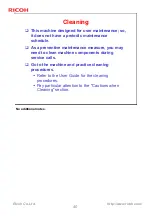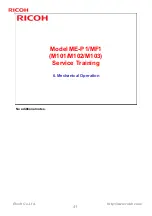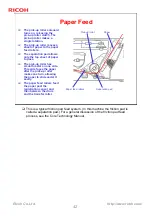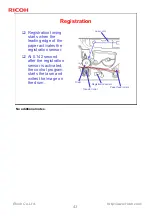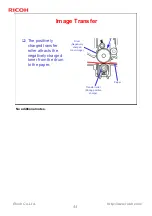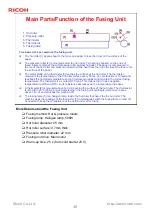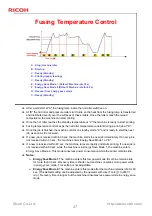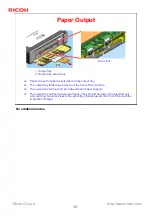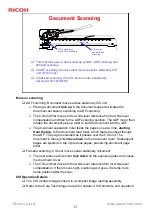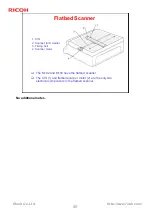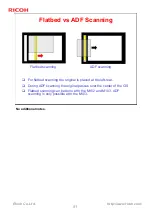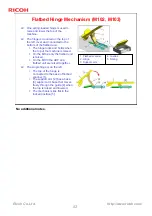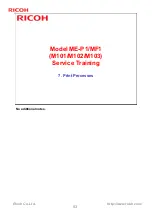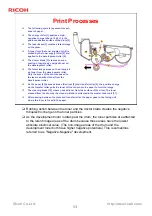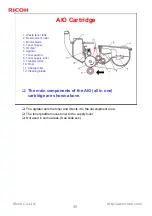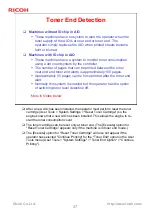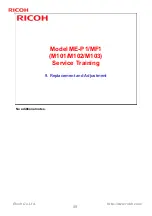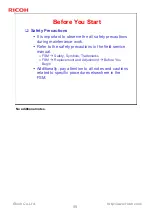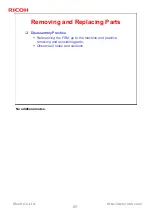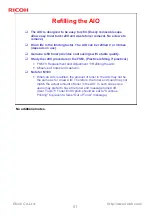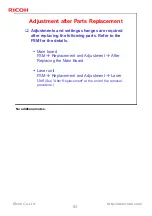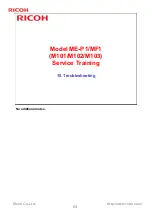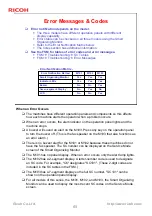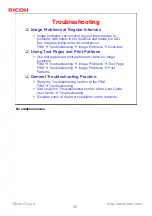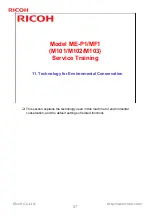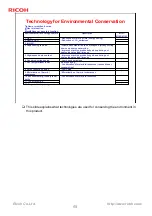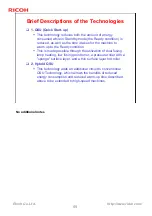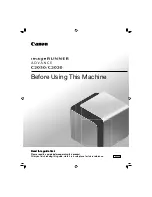
54
Ricoh Co. Ltd.
http://www.ricoh.com/
Print Processes
The following cycle is repeated for each
sheet of paper.
The charge roller [1] applies a high
negative charge (about -1000 V) to the
photoconductive surface of the drum [2].
The laser beam [3] creates a latent image
on the drum.
A toner from the toner supply unit [4] is
picked by the toner supply roller [5] and
applied to the development roller [6].
The doctor blade [7] creates an even
coating of negatively charged toner on
the development roller.
The latent image areas on the drum pick
up toner from the development roller.
Only the areas of the drum exposed to
the laser can attract toner from the
development roller.
Charge
Exposure
Development
Transfer
Fusing
As the paper [8] passes between the drum [2] and transfer roller [9], the positive charge
on the transfer roller pulls the toner off the drum onto the paper to form the image.
The cleaning blade [10] cleans unused toner from the surface of the drum. The toner
cleaned from the drum by the cleaning blade is collected in the waster toner unit [11].
After passing between the drum and transfer roller, the paper goes to the fusing unit
where the toner is fused to the paper.
Rubbing action between the toner and the doctor blade creates the negative
triboelectric charge on the toner particles.
As the development roller rotates past the drum, the toner particles are attracted
to the latent image areas of the drum because those areas have the lowest
absolute electrical value. (The non-image areas of the drum and the
development roller both have higher negative potentials.) This is sometimes
referred to as "Negative-Negative" development.

